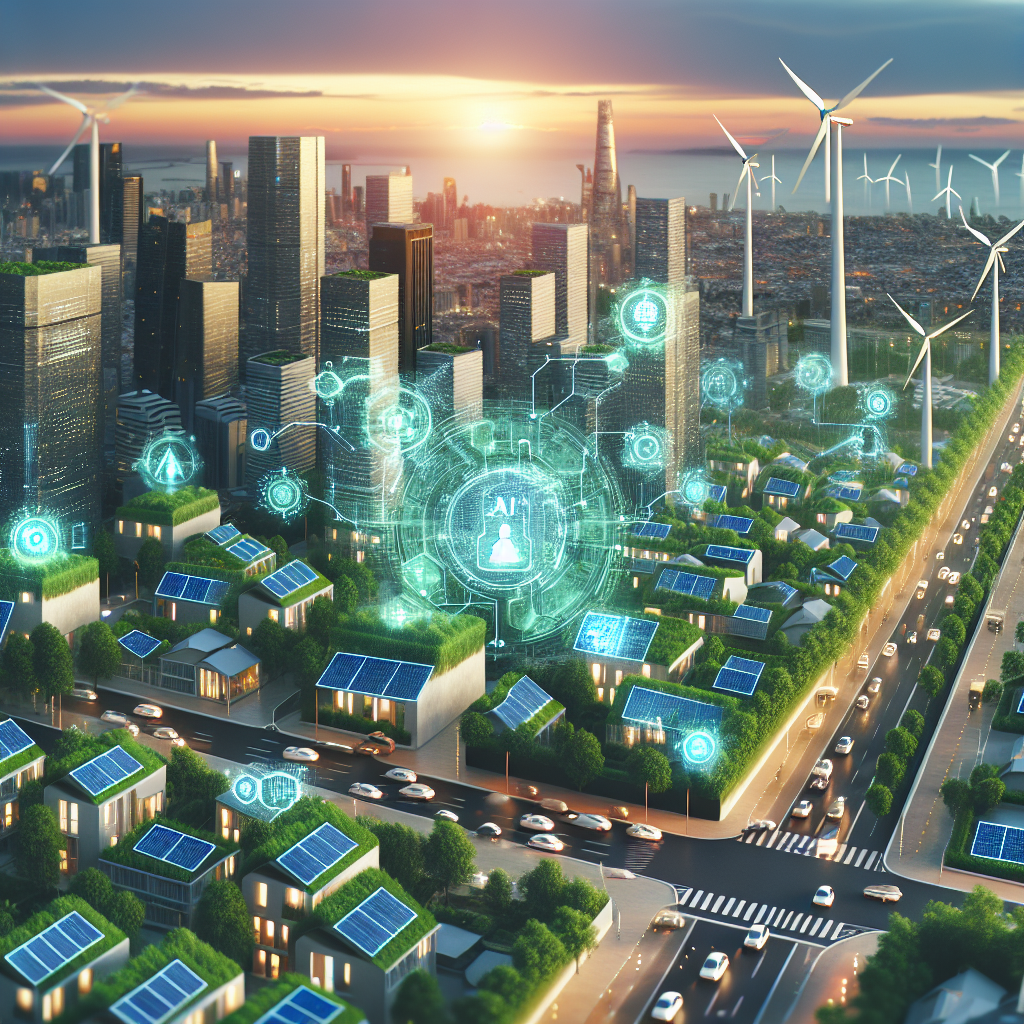In recent years, urbanization has been on the rise, with more and more people flocking to cities for better economic opportunities and a higher quality of life. However, this rapid urbanization has also led to a range of issues such as traffic congestion, pollution, waste management, and lack of affordable housing. In order to address these challenges and create sustainable cities of the future, innovative solutions are needed. One such solution is the use of Artificial Intelligence (AI) technology.
AI has the potential to revolutionize urban development by providing data-driven insights, optimizing resource allocation, and improving decision-making processes. From smart transportation systems to energy-efficient buildings, AI solutions can help cities become more sustainable and resilient. In this article, we will explore the various ways in which AI can be used to address urban development challenges and create greener, smarter cities.
1. Smart Transportation Systems
One of the key challenges in urban development is traffic congestion, which not only leads to wasted time and increased emissions but also impacts the quality of life of residents. AI-powered transportation systems can help alleviate these issues by optimizing traffic flow, reducing congestion, and improving public transportation services. For example, AI algorithms can analyze real-time traffic data to identify congestion hotspots and suggest alternative routes for drivers. In addition, AI can be used to optimize public transportation schedules, predict demand, and improve the efficiency of bus and train services.
2. Energy-Efficient Buildings
Buildings are a major source of energy consumption and greenhouse gas emissions in urban areas. AI can play a crucial role in making buildings more energy-efficient by optimizing heating, cooling, and lighting systems. For example, AI algorithms can analyze data from sensors installed in buildings to automatically adjust temperature settings based on occupancy levels and weather conditions. In addition, AI can be used to optimize the design of buildings, taking into account factors such as sunlight exposure, ventilation, and insulation to reduce energy consumption.
3. Waste Management
Waste management is another major challenge in urban areas, with growing populations leading to increased amounts of waste being generated. AI solutions can help optimize waste collection routes, improve recycling rates, and reduce landfill waste. For example, AI-powered sensors can be installed in waste bins to monitor fill levels and schedule pickups only when bins are full, reducing unnecessary trips and saving costs. AI can also be used to analyze waste composition data and identify opportunities for recycling and composting.
4. Affordable Housing
The lack of affordable housing is a pressing issue in many cities around the world, with rising property prices and limited availability making it difficult for low-income residents to find suitable accommodation. AI can help address this challenge by optimizing the construction process, reducing costs, and increasing the supply of affordable housing. For example, AI algorithms can be used to analyze building designs, materials, and construction methods to identify cost-saving opportunities and improve efficiency. In addition, AI can be used to predict housing demand and identify areas where new affordable housing developments are needed.
5. Public Safety
Ensuring the safety and security of residents is a top priority for urban planners and policymakers. AI can be used to enhance public safety by analyzing crime data, predicting crime hotspots, and optimizing police patrols. For example, AI algorithms can analyze historical crime data to identify patterns and trends, helping law enforcement agencies allocate resources more effectively. In addition, AI-powered surveillance systems can detect suspicious behavior in real-time and alert authorities to potential threats.
6. Water Management
Water scarcity is a growing concern in many urban areas, with increasing populations putting pressure on limited water resources. AI solutions can help optimize water management by monitoring water usage, detecting leaks, and predicting water demand. For example, AI-powered sensors can be installed in water distribution networks to track usage patterns and identify areas where leaks are occurring. AI can also be used to analyze weather data and predict drought conditions, helping water authorities plan for potential shortages.
FAQs
Q: How can AI help reduce traffic congestion in cities?
A: AI can help reduce traffic congestion by optimizing traffic flow, suggesting alternative routes, and improving public transportation services.
Q: Can AI help make buildings more energy-efficient?
A: Yes, AI can optimize heating, cooling, and lighting systems in buildings, reducing energy consumption and greenhouse gas emissions.
Q: How can AI improve waste management in urban areas?
A: AI can optimize waste collection routes, improve recycling rates, and reduce landfill waste by analyzing data from sensors installed in waste bins.
Q: Can AI help increase the supply of affordable housing?
A: Yes, AI can optimize the construction process, reduce costs, and predict housing demand to increase the supply of affordable housing in cities.
Q: How can AI enhance public safety in urban areas?
A: AI can analyze crime data, predict crime hotspots, and optimize police patrols to enhance public safety and security.
In conclusion, AI solutions have the potential to transform urban development and create more sustainable, resilient cities. By leveraging the power of AI technology, cities can address key challenges such as traffic congestion, energy consumption, waste management, affordable housing, public safety, and water scarcity. As urban populations continue to grow, it is essential that cities embrace AI solutions to build a better future for all residents.

